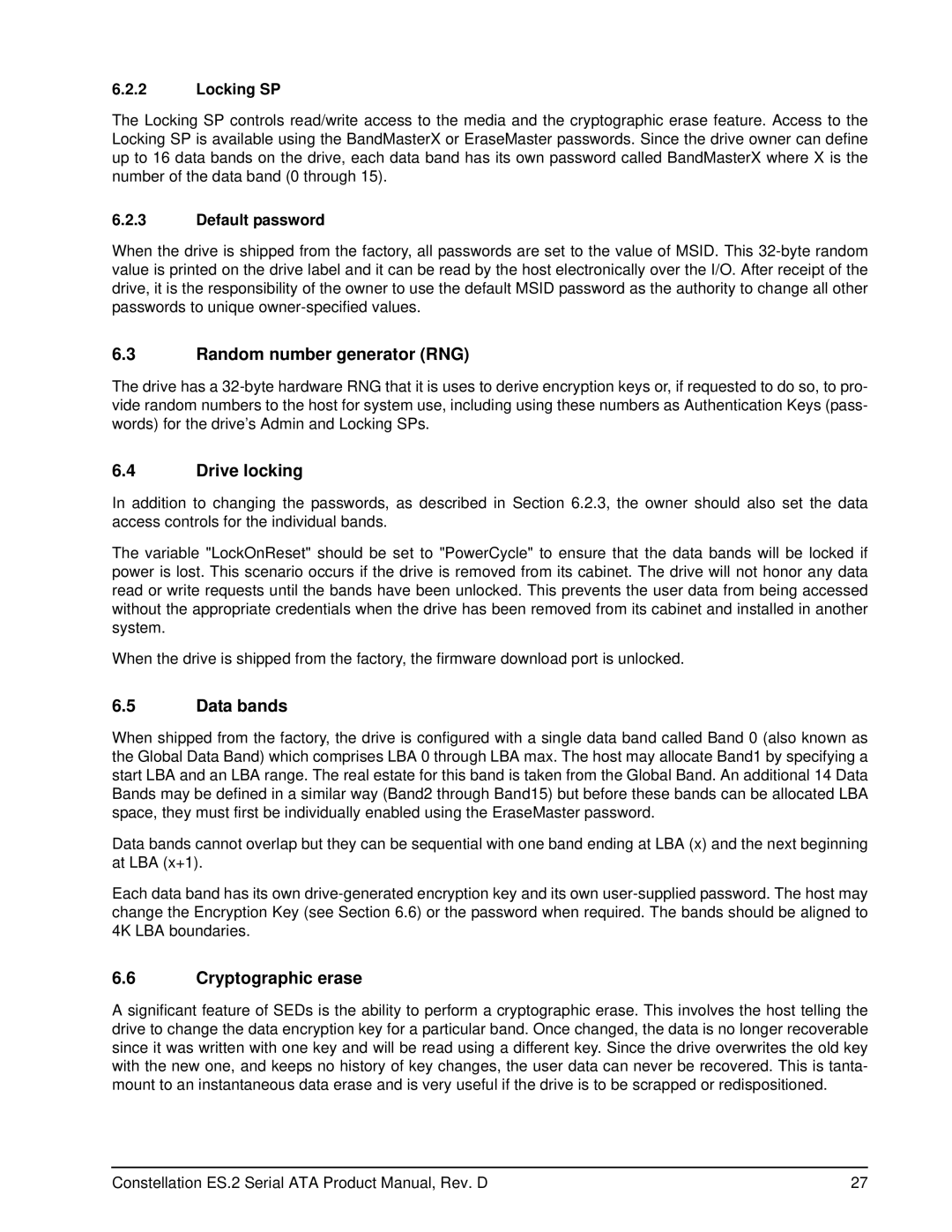ST33000650NS, SED FIPS 140-2 MODEL, ST33000651NS, ST33000652NS specifications
Seagate has long been a leader in data storage solutions, and their range of hard drives, specifically the ST33000652NS, ST33000651NS, SED FIPS 140-2 model, and ST33000650NS, showcases the company’s commitment to performance, security, and reliability. These models are ideal for enterprise applications requiring robust data protection and efficient storage capabilities.The Seagate ST33000652NS is designed for high-capacity storage, offering 3 TB of space. It utilizes a SATA 6Gb/s interface which ensures rapid data transfer rates, making it suitable for environments that demand quick access to large datasets. Its 7200 RPM spindle speed enhances performance, ensuring that read and write operations are executed swiftly.
Similarly, the ST33000651NS also provides 3 TB of storage but is slightly optimized for different workloads. Both models feature Seagate’s advanced caching technology, which enhances performance by efficiently managing data flow to and from the drive. This is crucial for applications requiring high-throughput operations, such as video streaming and database management.
Transitioning to the Seagate SED FIPS 140-2 model, this drive is particularly focused on data security. The FIPS 140-2 certification indicates that it adheres to stringent federal standards for cryptographic modules, ensuring that sensitive information remains protected. This model caters to government and enterprise clients concerned about the integrity and confidentiality of their data.
On the other hand, the ST33000650NS also features a similar capacity but is geared towards reliability and endurance. It is engineered to endure the challenges of continuous operation, accommodating enterprise environments that require 24/7 accessibility without compromising performance.
All these models come with integrated power management features that enhance energy efficiency, reducing operational costs while minimizing environmental impact. They also utilize Seagate’s innovative technologies for error recovery and data integrity, ensuring users can rely on their performance under demanding circumstances.
In summary, the Seagate ST33000652NS, ST33000651NS, SED FIPS 140-2, and ST33000650NS collectively offer a diverse range of features catered for various enterprise needs. With a strong emphasis on storage capacity, data security, and performance reliability, these drives are well-equipped to handle the intensive demands of modern digital landscapes. Whether looking for high-speed access or enhanced security features, Seagate continues to deliver trustworthy solutions for today’s data-driven world.
